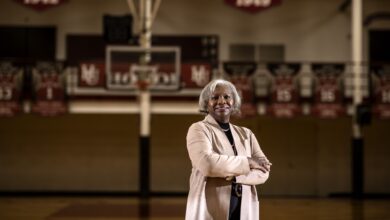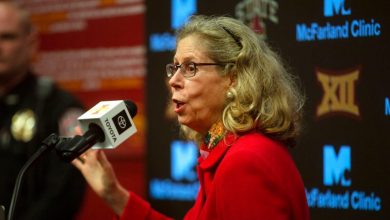A New Job Comes to the College Cabinet: Chief Experience Officer

[ad_1]
A handful of universities are taking a page from the corporate world’s playbook and hiring for a new senior-level position — chief experience officer.
The job title is common in fields like health care, technology, finance, and entertainment, and its duties typically involve coordinating across departments to ensure that customers have satisfying interactions with a company. Nearly 90 percent of companies surveyed by the research firm Gartner in 2019 employed a chief experience officer or similar position, up from 61 percent in 2017.
The title hasn’t been as widely adopted in higher education, which traditionally bristles at likening students to customers; a Chronicle search found only five universities with such a position, and a search of job listings posted in The Chronicle in the past two years found none with the title “chief experience officer.”
Despite such small numbers, the arrival of the job title in academe speaks to larger trends, like the increasing adoption of business practices in higher ed as well as concerns about how the public’s eroding opinion of the sector might be driven, at least in part, by widespread frustrations with applying to, enrolling in, and completing college.
And the job could be gaining traction. Robert Morris University, in Pennsylvania, became the latest to introduce a chief experience officer when it tapped a longtime student-life leader to fill the role this month. The University of Utah and William Woods University, in Missouri, have also added the cabinet-level positions in the last year. The job’s precise duties in a higher-ed context seem to vary, but broadly speaking, CXOs’ work is a blend of marketing, student affairs, and admissions; they’re charged with recruiting and retaining students, just as human-resources officials do for faculty and staff members.
Judy D. Olian, who as president of Quinnipiac University brought on a chief experience officer in 2021, said the job’s purview can be distilled to this: “Everything to do with academics is under the provost, and everything else that is student-facing is under the CXO.” Olian created the position as part of an administrative restructuring on the Connecticut campus, and her decision was informed in part by her own background as a business-school dean. “It was,” she said, “similar to what I had seen and heard about how organizations are creating a customer interface that is more seamless.”
She hired Thomas Ellett for the job. A former student-affairs administrator at New York University, he oversees enrollment management, student affairs, the registrar’s and bursar’s offices, and public safety. Ellett has made interactions with students a priority; he and his wife, an assistant professor of nursing at Quinnipiac, live in a residence hall. He has formed several student-advisory boards with which he consults on plans.
Ellett has also drawn criticism from at least one student, whose column in the student newspaper described him as the “chief of limiting experience.” But Olian, who spoke on behalf of the university about the new position, said that such criticism is to be expected, given the role’s visibility. “Anyone who signs a parking memo or a dining memo is going to get pilloried,” she said. Ellett’s prominence on campus may make him an easy target, she said, but it also makes it easier for students to approach him with their concerns.
“There are two strategies about handling people that have issues. One is to make it really hard for them to find who to talk to. The other is to make it easier for them to find who to talk to and to problem-solve,” Olian said. “I suppose the former strategy increases the frustration. I think the latter strategy may make you a bit more vulnerable, but it is exactly how you want to be responsive.”
A Broad Scope
While the job of a chief experience officer might resemble that of, say, a vice president for student life, its scope is broader, said John Locke, who was recently named Robert Morris’s CXO. “It’s more comprehensive than just student life. It’s ‘From the minute they get out of their car to the minute they cross the graduation stage, what’s that experience been?’” The job’s scope extends even beyond students to include parents and families, whom Locke also counts among his constituents.
Though the job title may be unfamiliar in academe, its emphasis on the importance of students’ experience might be more “digestible” to students who aren’t familiar with campus administrative structures, said Kevin Kruger, president of Naspa: Student Affairs Administrators in Higher Education. As a single ombudsperson to whom students can air their grievances, “you get blamed for a lot, but it certainly helps students see that their institution is trying to create a more unified experience,” Kruger said. At the same time, he said, colleges should clearly communicate the need for a chief experience officer, to ward off perceptions of corporatism or administrative bloat.
At the University of Utah, the role of a CXO sounds a lot like that of another increasingly popular job title — vice president for student success, who is often assigned to help clear away bureaucratic obstacles to students’ academic progress. Taylor R. Randall, the university’s president, wrote that he’d hired a CXO partly because his campus is very decentralized. “Our students often face an unnecessarily confusing array of services, activities, and initiatives,” he wrote in his announcement of the hiring of Andrea Thomas, an assistant dean at Utah’s business school, as CXO. “This confusion can lead to prolonged time-to-degree, delayed entry into majors, unnecessary frustration, and a diminished overall student experience.”
Thomas’s task, then, is to streamline some of those processes. For example, she said, she’s working on a centralized portal where newly admitted students and their parents can get key information before arriving on campus — details about housing assignments or subject-specific scholars’ programs — all while drumming up enthusiasm to “really reinforce the decision that they made to apply to the University of Utah.” She’s also a liaison on projects that span multiple departments, such as a new living-learning community that brought together staff members from housing and from an academic unit.
At Southern New Hampshire University, the CXO position, which has existed since 2017, has played a key role in some policy changes, said Paul J. LeBlanc, the president. Among them was the decision to keep student-services offices open until midnight during the week, in addition to weekend hours, to better accommodate the schedules of working students. “If we didn’t have that person, I’m not sure that any one individual inhabiting one part of our bureaucracy would have made that case,” LeBlanc said. More recently, Susan Nathan, the chief experience officer, advocated for academic advisers to receive training in trauma-informed counseling, and for the advisers’ caseloads to be lowered so they could provide students with more individual attention.
Creating a top-level position dedicated to the student experience doesn’t absolve others at the university from paying attention to it, LeBlanc said. “Everyone’s got a responsibility, but no one person can have their arms around the whole, unless you have a chief experience officer,” he said. “By analogy, I would argue DEI is everyone’s work, but I’m not going to not have a chief diversity officer looking at the whole, collecting the data, holding us to account, helping us forward our thinking.”
Corporate Roots
Ellett, Locke, and Nathan have primarily academic backgrounds, but two recently minted CXOs have roots in the corporate world. Ted Blashak, who started as William Woods’s chief student-experience officer in 2022, has worked for Zovio, the ed-tech company that announced last year that it’s going out of business, and the higher-ed consulting firm Acadeum. The latter role, in fact, is what brought him to William Woods; after Blashak made a set of recommendations for the institution as a consultant, the president, Jeremy L. Moreland, brought him aboard to put them into practice.
Blashak sees his new job as a hybrid between a chief operating officer, with a focus on data analysis, and a chief people officer, with lots of in-person interaction with students. Though he’s been in the post for only nine months, he said that mix had worked out well so far. In the fall of 2022, Blashak’s first on the job, the private liberal-arts institution saw a 40-percent increase in new enrollment, bringing 269 more students to campus. Blashak said William Woods projects another sizable jump for this coming fall.
But Blashak’s job continues once a student arrives on campus. He’s adapted to higher ed a common corporate practice — customer journey mapping, or charting all the points at which someone might interact with a company. “Over that student journey, there’s opportunities for us to seize the teachable moments outside the classroom,” he said. “That’s our opportunity for an aha moment to increase that student’s experience and, as a byproduct, increase the university’s retention.”
Like Blashak, Thomas, at Utah, brings business bona fides to the job. As a former executive at Walmart, the Hershey Company, and PepsiCo, she’s “not as uncomfortable with the idea of students’ and customers’ being thought of in the same way,” in part because she doesn’t believe academe is changing its approach in doing so. “You will be hard-pressed to find somebody on the campus who doesn’t want to increase completion rates, who doesn’t want to help students be successful,” she said. “I think a lot of it is just in how we talk about this, that will help people not feel like it’s such a departure from how higher ed has been operating.”
Thomas, a Utah alumna who earned a doctorate in higher-education management from the University of Pennsylvania, thinks she’ll have more company in the CXO role in the coming months. Students, she said, are “really hungry for what they’d been missing” during the days of all-virtual instruction, and are more eager to get involved in on-campus life, in turn creating a greater need for jobs like hers. And as demographic shifts nationwide send more nontraditional students to the classroom, Thomas said, CXOs can ensure they get the support they need.
Kruger, of Naspa, isn’t ready to call chief experience officers a trend that’s poised to take higher ed by storm. Conceptually, he said, it’s not “earth-shattering,” since focusing on student experience and engagement has long been the bedrock of the student-affairs field. But the title does allow a president to “message in a particular way to their constituents about what he or she thinks is important.”
[ad_2]
Source link






